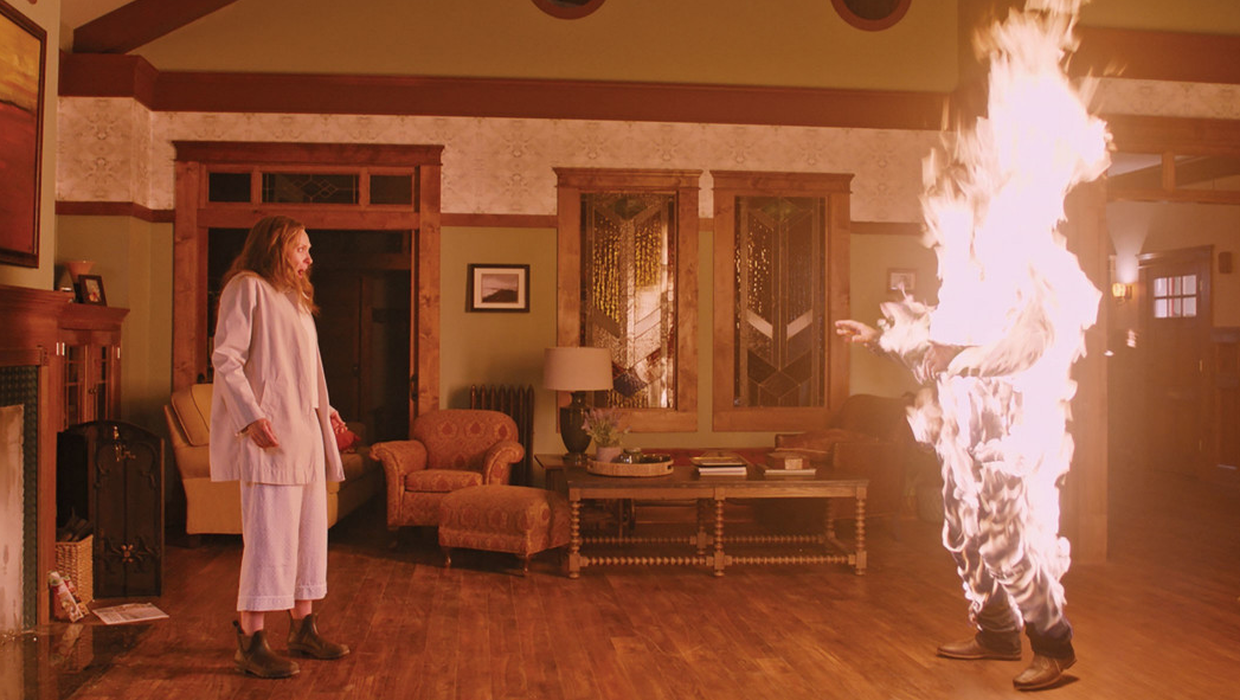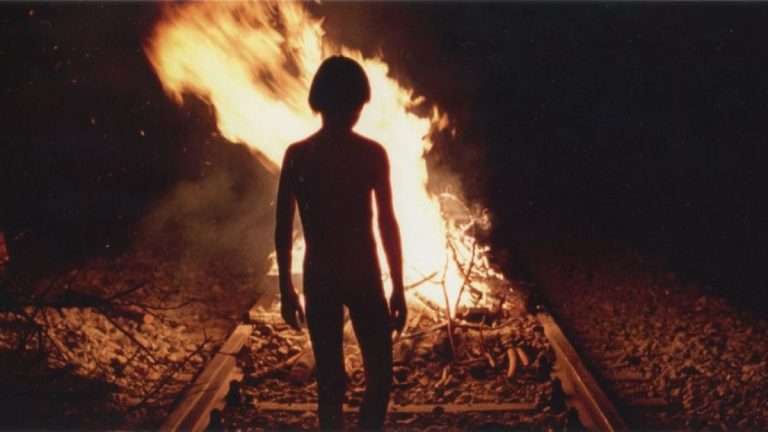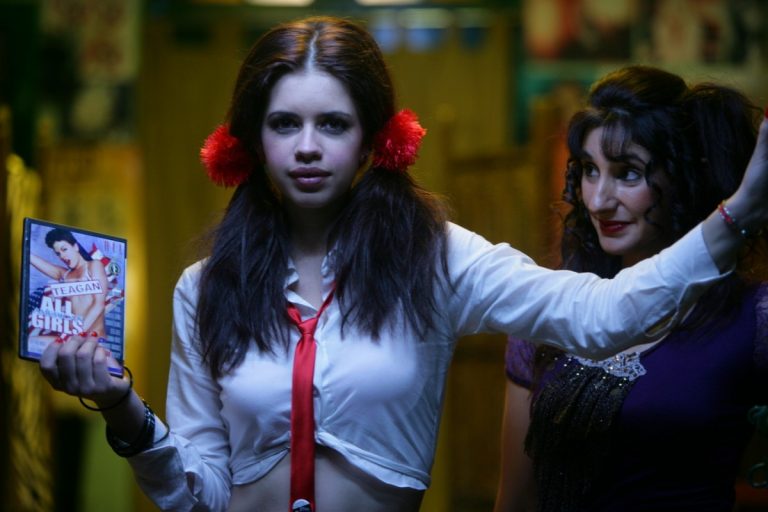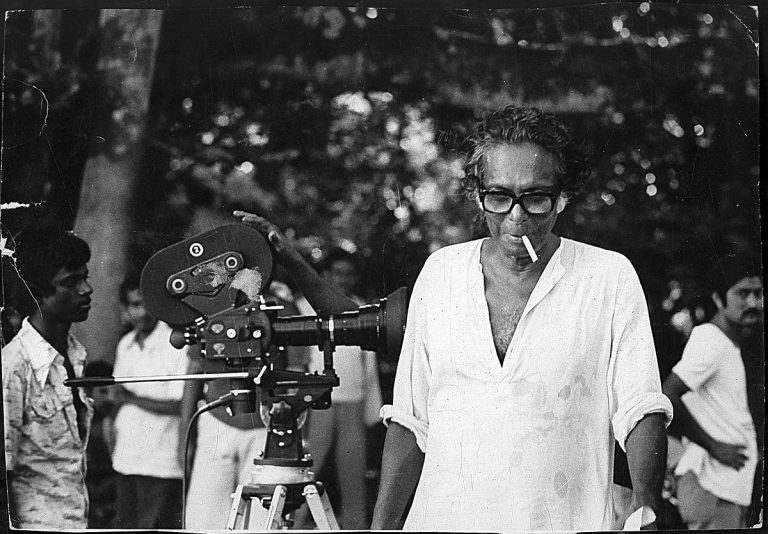An Analysis of Ari Aster Filmography:
“And I just don’t want to put any more stress on my family. I’m not even really sure if they could… could give me that support? And I just… I just feel like… I just sometimes feel like it’s all ruined. And then I realize that I am to blame. Or not that I’m to blame, but I am blamed!”
– Annie Graham, Hereditary
The concept of family is commonly assumed to be as natural as it gets. And, as the dictionary puts it, the basic assumption for defining the term would be, simply, that of a “social nucleus represented by two or more individuals that are living in the same dwelling and, as a rule, are related to each other by marriage or by kinship or affinity.” In reality, the term family, and more importantly, the truth of what makes a family such, represents a far more ambiguous discourse than what may appear to be a superficial view.
From a social point of view, for example, the primary function of the family is defined as that of reproducing society. In this sense, its reason for being would be mainly reproductive and functional. In contrast, according to a religious reading, it can be cited how in the prelude to the creation of the first woman, God said: “It is not good for the man to be alone. I will make a helper suitable for him” (Genesis 2:18). Considering this biblical passage, the ultimate purpose of the family, and of the other, would not meet a reproductive purpose, but one of reciprocity and belonging.
Ari Aster, an American director and screenwriter who has revolutionized the horror landscape in recent years, has managed to breathe new life into the genre precisely by dissecting this assumption. Although employing heterogeneous angles, settings, subtexts, and dynamics remains horrific and disturbing, a common thread binds his entire filmography to date: a truth about one of the most real issues to be dealt with; namely the tough realities that lies at the heart of families.
Starting with one of his lesser-known academic works, Aster opens the discussion of family issues, “The Strange Thing About the Johnsons” (2011), a 29-minute short produced as a thesis at the American Film Institute’s graduate film school, the AFI Conservatory.
As the director claims, the desire behind the development of this project was to approach an issue so vile as to not only challenge the institute of the family but also to cross the very boundary of what is commonly considered taboo. By finding this element in the reversal of abusive relationships in a small family unit, the film embodies the embryonic version of what would become a pivotal element of his early feature films: the distortion of family values and the drama of the inability of a healthy connection between relatives.
In the film’s opening sequence, the family patriarch, Sidney Johnson (Billy Mayo), catches his preteen son Isaiah (Brandon Greenhouse) in an intimate moment, masturbating over some photographs. Apologizing for putting his son in an uncomfortable situation, Sidney explains to Isaiah that there is nothing wrong with what he was doing and that he should not be ashamed of feeling desires that are natural to every human being. Unfortunately, Sidney is unaware that the photograph his son was masturbating to was of him as a younger man. Therefore, he indirectly allows his son to make him the “consenting” subject of his fantasies.
Years ensue in which Sidney is made the victim of harassment – physical as well as emotional – and a victim of incestuous behavior by an executioner who is his son, and in which he is unable to seek support from his wife Joan (Angela Bullock), who is aware of this disturbing dynamic, and yet refuses to process it. The son’s claim of his actions as an act of love toward the parent contributes to the father’s inability to defend himself. Love, in Isaiah’s view, Sidney should reciprocate rather than subject himself to repressing it in the name of a common morality that unfairly points to their relationship as unhealthy.
In short, this is an inversion of a reality far more common and leads to complex misfortunes in many families. In the case of Johnsons, it results from distorting what should be a positive form of expression of affective love. If “The Strange Thing About the Johnsons” explores a monstrous theme, but one of instantly recognizable horror, with “Hereditary” (2018), Ari Aster chooses to venture into the exploration of a much more subtle and complex terror: the theme of inheritance.
As children, our parents, our genes, our inclinations, our possessions, as much as some of our misfortunes and fortunes, are elements that we inherit to a large extent. In Aster’s picture, these inherited things represent an almost forced version of destiny to which we are compulsorily subjected. Annie (Toni Collette), the protagonist of the director and screenwriter’s debut feature film, represents the impossibility of opposing the roots we have inherited from our families and how the choices of our descendants can take on a predestining nature, sometimes marking our path in an immovable way.
The family depicted in Hereditary is that of the Grahams and their affairs following the death of the matriarch Ellen, Annie’s mother, whose life was devoted to occult practices. Moreover, the matriarch has morbidly attached herself to Charlie (Milly Shapiro) – her grandchild and Annie’s second child. The heredity of the title concerns the evil that, in the form of mental illness and psychic disorders, infected, passing from one generation to the next. In the Graham family, the connection of parent and child is not a safe cocoon but a reflection of a malaise passed on through inheritance.
“Hereditary,” by interweaving family drama with supernatural horror, explores the conflicting relationships between the different members of a family, unable to communicate with each other and locked in their cocoon of suffering, like the figures displayed in the dollhouse on which Annie, a miniaturist, is working. The consequences of the family’s inability to communicate reach a peak when a chain of shared responsibilities culminates in Charlie’s death.
In every scene, every confrontation, and every interaction, the film is then permeated by a collective but quiet sense of resentment and suspicion felt by each family member for one another. The web of negative emotions is allowed to grow until everyone is finally consumed. Family members kill each other, lie to each other, and damn each other while refusing to admit their emotions and faults. In the film’s finale, the maze of internalized and never admitted negativity becomes material in the crowning of the dynastic task forcibly handed down by the matriarch and in the physical representation of the faults that family members have refused to admit.
With these first two works, Ari Aster explores how family dynamics can twist until they take on violent and macabre overtones. But how, then, to know if a family unit is in good condition? What are the signs that tell that familial relationships are healthy? If incommunicability and inability to connect empathically destroy both the Johnson family and the Graham family, in “Midsommar” (2019), the theme of solidarity and understanding is addressed. These are the factors that, theoretically, would have facilitated the redemption of characters in the previous two stories.
The director’s second feature film, “Midsommar,” is a folk horror, a horror of paganism and traditions. The film follows the protagonist, Dani (Florence Pugh), and her journey to a Swedish community with her boyfriend and some of his friends to attend the midsummer festival celebration at the community of Harga.
Dani is recovering from a family tragedy, and Christian (Jack Raynor), the boyfriend, is now the only person protecting her from the vast sea of loneliness. Despite the movie’s focus on the couple’s dynamic, the theme of the family remains central to the story’s unfolding. If the film opens with Dani’s loss of her family, it closes with the protagonist’s meaningful smile due to the acquisition of a new family in the inhabitants of Harga.
The “Midsommar” commune represents an alternative to the traditional nuclear family, an ordered community where light, inclusion, connection, and empathy reign. The sense of solidarity she finds there drives the protagonist to enter it as a new member. The ending is falsely positive. While on the surface, Dani has found liberation from past traumas and a new belonging, she has fallen victim to the indoctrination of a cult. She has been consumed by the order, which uses emotional manipulation for the purpose of attracting her. Indeed, a healthy family relationship should enable one to know the other but also to know oneself through the other. Dani is deprived of self-knowledge, becoming, for all intents and purposes, one with the community itself.
It is interesting to note how the manipulation is not based on negative feelings but on the sense of emotional participation that’s generally considered appropriate to maintain a healthy family unit. Exemplifying this is Christian’s betrayal, a victim of a love drug used as a tool to secure outside blood for the community. Dani, witnessing the infidelity, finds herself in a fit of anguish, but now she is not alone anymore. The other women in the commune follow her, surround her, and imitate her gestures and cries, in an attempt to share her pain and get rid of it.
The commune comes up with a gesture of cohesion in stark contrast to Christian’s previously expressed annoyance at his girlfriend’s pain. Moreover, in the same way, alongside the expression of grief, the people of Harga share joy and celebration in a complete communing of emotions as a response to the human desire not to feel alone, either in grief or delight. It’s one of the greatest blessings a family can give.
The theme of healthy familial love connects all the movies that portray deviant forms of what a family could be. In each of them, while seeking it, the characters are unable to receive love and give it, except in twisted, tainted, and essentially distorted forms. In “The Strange Thing About the Johnsons,” a son’s love for his father turns into obsession, desire for control, submission, and possession. Whereas, in “Hereditary,” the heredity of mental illness, inter-generational trauma, resentment, and incommunicability doom a family eager for connection and closeness. However, they cannot offer it to each other and only provide hurt and lies, and eventually destroy themselves.
Finally, in “Midsommar,” the search for solidarity drives the protagonist to renounce her past, her morals, and her faculty for self-determination, trading her freedom for the need for connection and belonging. Although no film shows a real happy ending or the depiction of a truly positive connectedness, each functions as a cautionary tale of how easy it is to transmute positive affectivity into a source of shared communal pain. Moreover, with Midsommar, Ari Aster has begun to explore the joy given by having a safe place of belonging, albeit in a manipulative form. Harga’s strong luminosity is, in fact, nothing more than a manifestation of the joy and ecstasy of being connected, understood, and indispensable.
Soon to be released internationally, the director’s next film, “Beau is Afraid” (2023), is expected to focus on the relationship between a mother (Patty LuPone) and her son (Joaquin Phoenix). This should hint at the director’s continuation of the themes of familial relationships and, perhaps, the possibility of the film culminating in an unprecedented ‘happy ending.’







![Taxi Driver [1976] : An Existential Ride](https://79468c92.delivery.rocketcdn.me/wp-content/uploads/2019/06/Taxi-Driver-An-Existential-ride-High-on-Films-1976-768x433.jpg)
